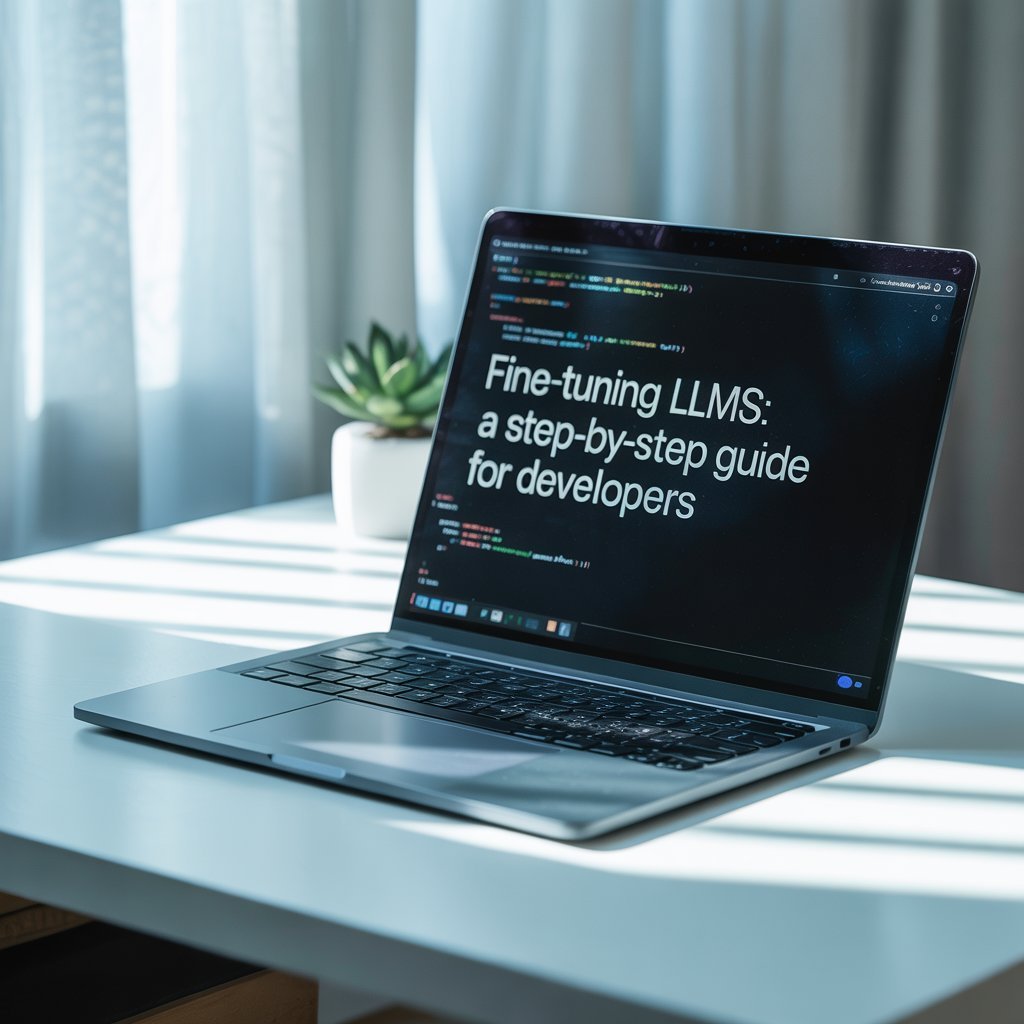Introduction
Large Language Models (LLMs) like GPT-4 and Llama 2 are powerful out-of-the-box, but fine-tuning unlocks their full potential for specialized tasks. While prompt engineering can handle simple adaptations, fine-tuning tailors the model’s weights to your specific domain whether that’s legal contract analysis, medical report generation, or a brand-aligned chatbot.
Why Fine-Tune?
- Precision: Reduce hallucinations in niche domains.
- Cost: Lower long-term inference costs vs. lengthy prompts.
- Consistency: Enforce structured outputs (e.g., JSON, XML).
Example: A healthcare startup fine-tunes Llama 2 to extract patient diagnoses from messy EHR notes, achieving 92% accuracy vs. 78% with zero-shot prompts.
1. When to Fine-Tune an LLM
Ideal Use Cases
- Domain-Specific Language: Legal jargon, medical terminology, or engineering schematics.
- Structured Outputs: Generating API calls, SQL queries, or standardized reports.
- Style Mimicry: Matching a brand’s tone (e.g., playful vs. formal).
When Not to Fine-Tune
- Broad Tasks: Use prompt engineering for general Q&A.
- Limited Data: Fewer than 500 examples? Try Retrieval-Augmented Generation (RAG).
- Dynamic Knowledge: For real-time data (e.g., stock prices), RAG outperforms fine-tuning.
Trade-Offs Table
| Approach | Data Needed | Compute Cost | Best For |
| Zero-Shot Prompts | None | Low | General tasks |
| RAG | 10–100 docs | Medium | Knowledge-intensive |
| Fine-Tuning | 500+ examples | High | Specialized workflows |
2. Preparing Your Dataset
Data Requirements
- Size: 1,000–50,000 examples (smaller for LoRA, larger for full fine-tuning).
- Format: JSONL, CSV, or Hugging Face Dataset objects. Each example should include:
- json
- Copy
- Download
- {“input”: “Summarize this legal clause:”, “output”: “The clause stipulates…”}
Data Cleaning Steps
- Deduplication: Use datasets library’s remove_duplicates().
- Bias Mitigation: Check for skewed demographics with Fairlearn.
- Tokenization: Trim inputs to the model’s max length (e.g., 2048 tokens for Llama 2).
Synthetic Data Generation
No labeled data? Use GPT-4 to create synthetic pairs:
python
Copy
Download
from openai import OpenAI
client = OpenAI()
response = client.chat.completions.create(
model=”gpt-4″,
messages=[{“role”: “user”, “content”: “Generate 10 Q&A pairs about cybersecurity.”}]
)
3. Choosing a Fine-Tuning Method
A. Full Fine-Tuning
- Updates all model weights. Requires high-end GPUs (A100/H100).
- Best for drastic domain shifts (e.g., adapting a general model to molecular biology).
B. LoRA (Low-Rank Adaptation)
- Freezes the base model, adds trainable rank-decomposition matrices.
- 90% fewer parameters than full fine-tuning.
Code Example (LoRA with Hugging Face):
python
Copy
Download
from peft import LoraConfig, get_peft_model
config = LoraConfig(
r=8, # Rank
lora_alpha=16,
target_modules=[“q_proj”, “v_proj”],
lora_dropout=0.05,
bias=”none”
)
model = AutoModelForCausalLM.from_pretrained(“meta-llama/Llama-2-7b”)
peft_model = get_peft_model(model, config)
peft_model.print_trainable_parameters() # e.g., “Trainable: 0.2%”
C. QLoRA (Quantized LoRA)
- 4-bit quantization + LoRA for memory efficiency. Runs on a single T4 GPU.
4. Step-by-Step Fine-Tuning Process
Step 1: Setup Environment
bash
Copy
Download
pip install transformers datasets peft accelerate bitsandbytes
Step 2: Load and Preprocess Data
python
Copy
Download
from datasets import load_dataset
dataset = load_dataset(“json”, data_files=”data.jsonl”)
tokenizer = AutoTokenizer.from_pretrained(“meta-llama/Llama-2-7b”)
def tokenize(examples):
return tokenizer(examples[“input”], truncation=True, max_length=512)
tokenized_dataset = dataset.map(tokenize, batched=True)
Step 3: Configure Training
python
Copy
Download
from transformers import TrainingArguments
args = TrainingArguments(
output_dir=”output”,
per_device_train_batch_size=4,
gradient_accumulation_steps=2,
warmup_steps=100,
learning_rate=3e-4,
fp16=True,
logging_steps=10,
)
trainer = Trainer(
model=peft_model,
args=args,
train_dataset=tokenized_dataset[“train”],
)
trainer.train()
Step 4: Evaluate the Model
python
Copy
Download
from evaluate import load
rouge = load(“rouge”)
predictions = trainer.predict(tokenized_dataset[“test”])
print(rouge.compute(predictions=predictions, references=references))
5. Deploying and Monitoring
Exporting the Model
python
Copy
Download
peft_model.save_pretrained(“llama2-finetuned”)
tokenizer.save_pretrained(“llama2-finetuned”)
Hosting Options
- Serverless: Hugging Face Inference API ($0.02–$0.20/hour).
- Self-Hosted: FastAPI + Docker on AWS EC2 (g5.2xlarge instance).
Monitoring
- Track latency/errors with Prometheus.
- Detect drift with Evidently.ai (statistical tests on input distributions).
Conclusion
Fine-tuning transforms generic LLMs into precision tools for your domain. While it demands upfront investment in data and compute, techniques like LoRA and QLoRA make it feasible for small teams. Start small—fine-tune a 7B model on a single GPU, then scale as needed.





